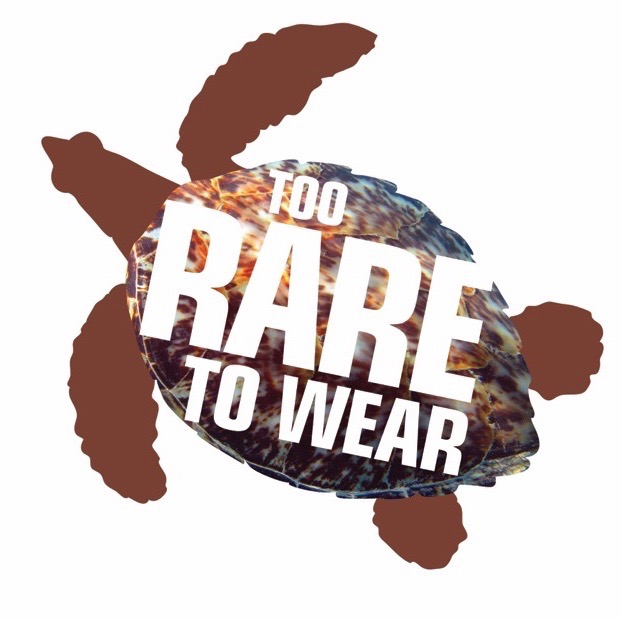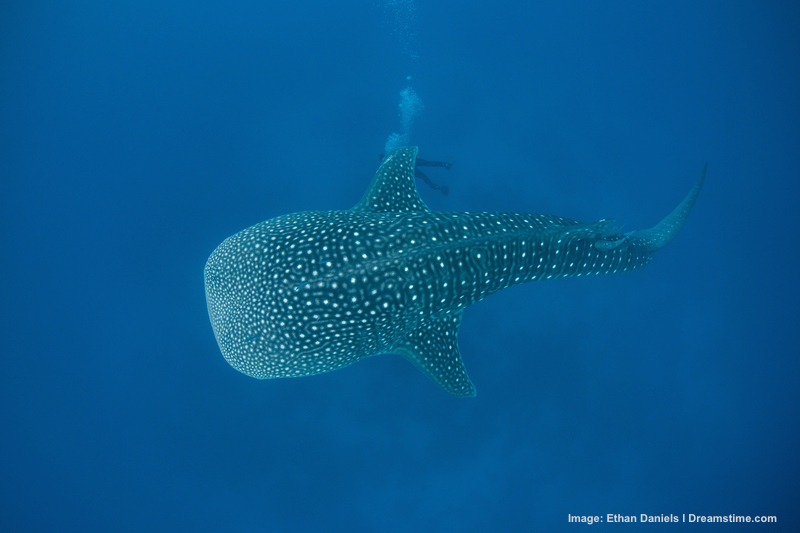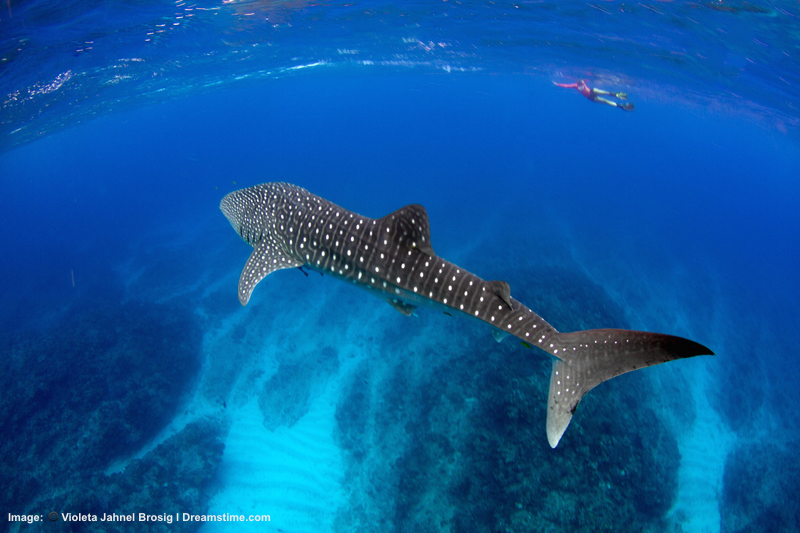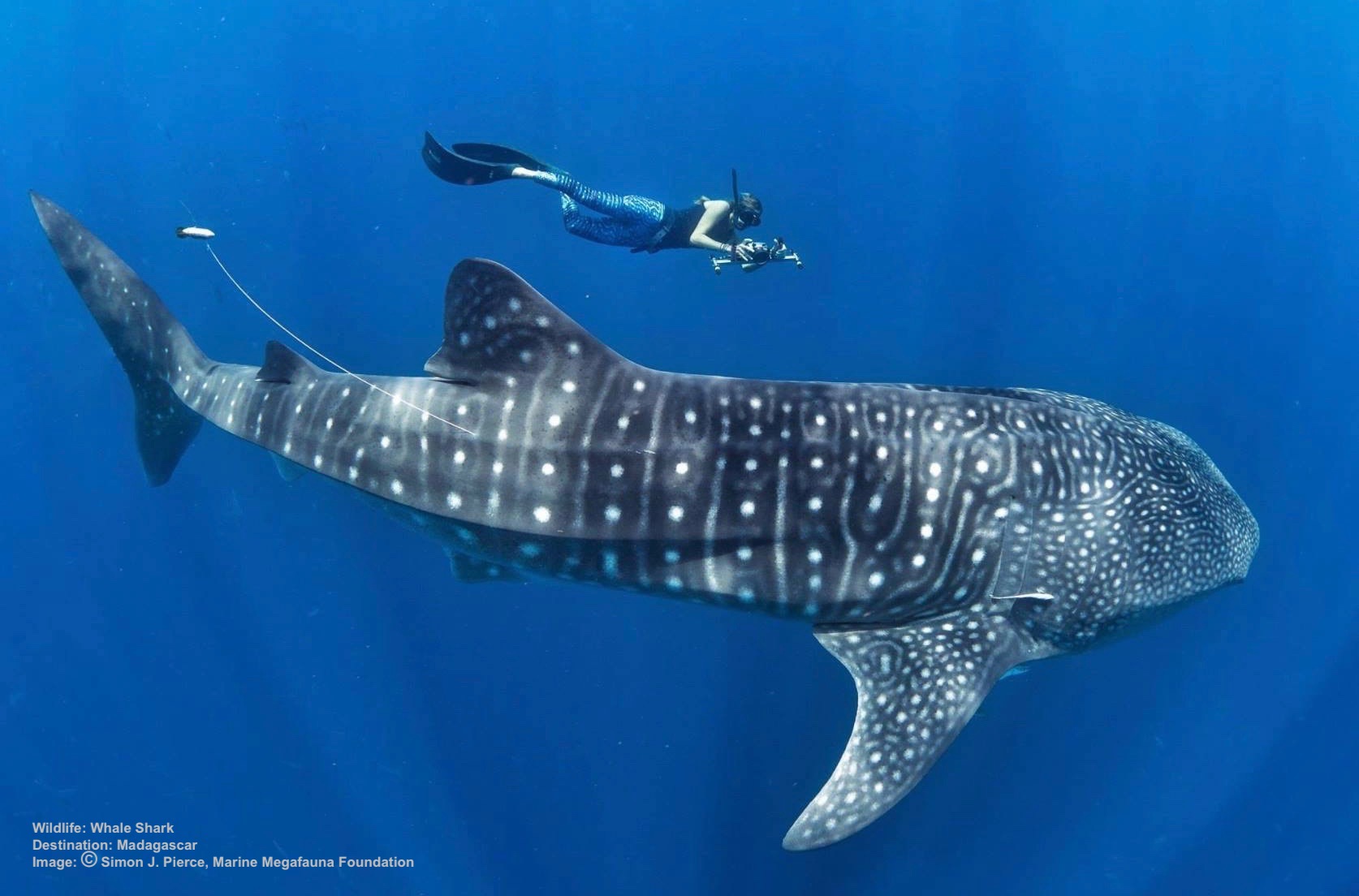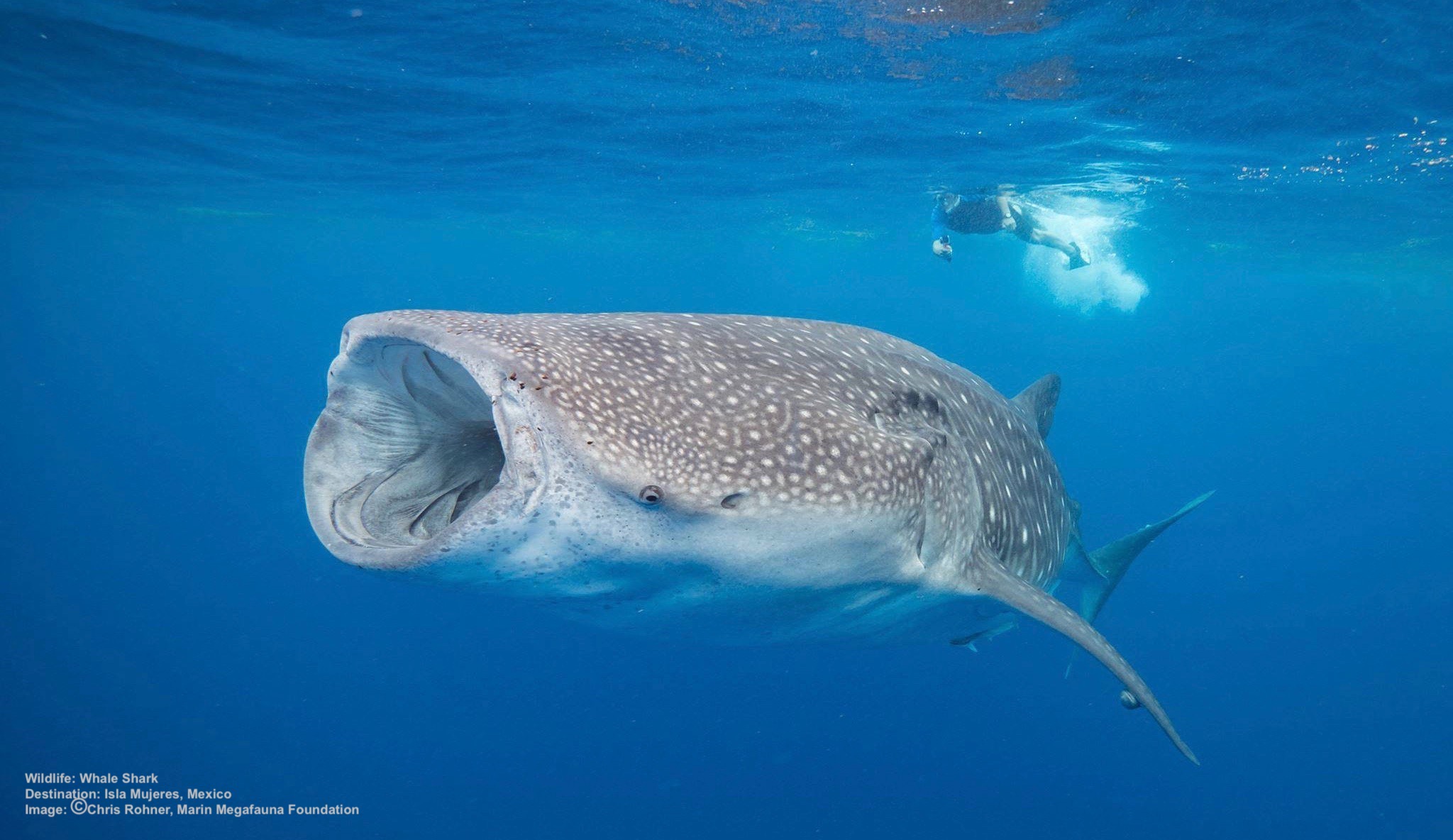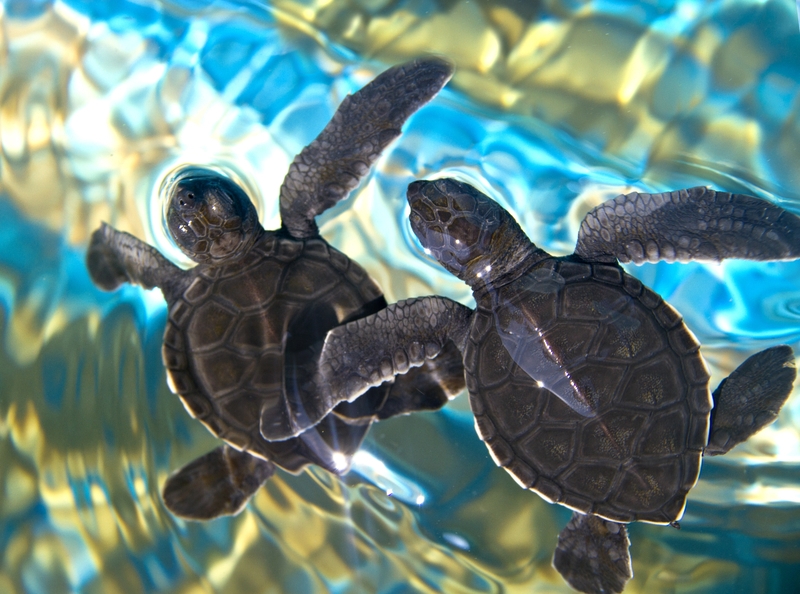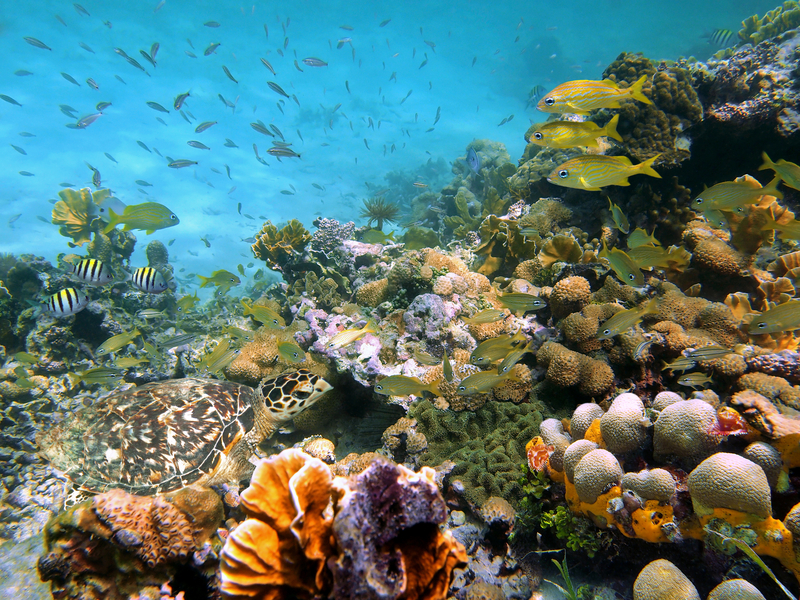What is a Whale Shark?
Whale Shark Field Guide - Chapter One
THE PLANET'S BIGGEST SHARK IS THE SIZE OF A DOUBLE DECKER BUS! WHALE SHARK, A MYSTERIOUS, SURFACE EATING, DEEP DIVING, MIGRATING, GENTLE SEA GIANT. IMAGE ©KRZYSZTOF ODZIOMEK ⎮DREAMSTIME.COM
What is a Whale Shark? The Planet's Biggest Fish!
Yes, this is a real shark - but whale sharks are gentle giants that migrate through the oceans in the center portion of the globe where the water is (hopefully) warm and the plankton is (hopefully) plentiful.
Experience Whale Sharks
Age: No limits except very young children.
Physical Ability: Most tour operators can accommodate a wide range of physical ability.
Precaution: Consult your doctor about medical conditions that may prevent your participation.
Equipment: Bio-degradable sunscreen, sea sickness medication if necessary. Snorkel gear if desired.
Experiences:
Small boat. Watch, take pictures, enjoy!
Swim with Whale Sharks! Except for very young children, anyone who can swim well can swim with whale sharks.
Diving is not an automatically responsible viewing method. Snorkeling is less stressful to the shark.
Whale Shark Fun Facts
1. Big Fish! The whale shark was named for its size - they are actually the biggest fish on the planet - bigger than a city bus!
2. Shark Teeth: Whale sharks have 3,000 tiny teeth arranged into 300 (or more) rows – but they are NOT used for biting or chewing.
3. Wide Mouth: A whale shark’s mouth can be nearly 5 feet (1.3m) wide! But ...
4. Tiny Throat! But their throat is just the size of a quarter! (About 2.5cm) They could not swallow you if they wanted to - which they do not! Whale sharks eat krill and plankton, switching to small fish only when krill or plankton are scarce.
5. Spot a whale shark: The spot patterns above their pectoral fins are specific to each individual. Researchers use spot pattern photographs to identify and track them. Citizen scientists, like you, can help.
6. Long Haul Migration - Slowly: Whales sharks have been found to migrate 5000 miles (7,200km) and more - at an average swim speed of only 2.3mph (3.7kph) !
How Big is a Whale Shark?
Adult Weight: 20 tons or 44,092 pounds ( 20,000kg) and more.
Adult Length: 40 feet (12m). Whale sharks have been reported up to 60 feet (18m)
HOW BIG IS A WHALE SHARK? VERY BIG! ADULTS CAN GROW 40 TO 60 FEET LONG (12-18M) AND WIEGH 20 TONS (20,000K) OR MORE! IMAGE: ©VIOLETTE JAHNEL BROSIG I DREAMSTIME.COM
Other Names for Whale Sharks
In Spanish it is known as “pez dama” which means, “fish lady”. In Taiwan, it is nicknamed “tofu shark” because of the taste and texture of its meat - an indicator of why conservation may be a problem there. See Whale Shark Field Guide Chapter 2: Whale Shark Conservation - Everything You Need to Know for more on whale sharks and Taiwan.
TASSELED WOBBEGONG SHARK IS ANOTHER WHALE SHARK RELATIVE. IMAGE: ©ETHANDANIELS⎮ DREAMSTIME.COM
Other Whale Shark Related Species
The whale shark belongs to the order: Orectolobiformes or carpet sharks. The following sharks are also in this order: Tasseled wobbegong shark (Eucrossorhinus dasypogon), white–spotted bamboo shark (Chiloscyllium plagiosum), nurse shark (Ginglymostoma cirratum), blind shark (Brachaelurus waddi), and collared carpet shark (Parascyllim collarae).
THE WATERS OFF BELIZE. A WHALE SHARK'S MOUTH CAN BE 5 FEET WIDE (1.3M) BUT ITS THROAT IS ONLY AN INCH (2.5CM) IMAGE: ETHAN A. DANIELS ⎮DREAMSTIME.COM
How To Identify a Whale Shark
WHALE SHARK'S SMALL EYES CAN CLOSE, ROTATE AND EVEN BE PULLED BACK INTO THEIR HEADS. A MIRROR BEHIND THEIR RETINA, LIKE CATS, HELPS THEM SEE IN LOW LIGHT. IMAGE THANKS TO SIMON J. PIERCE PHD, SCIENTIST AND MARINE LIFE PHOTOGRAPHER.
Their astounding size, whale shark is both the largest shark species and the largest fish species alive today, and their coloring makes whale sharks very easy to identify.
Look for the dots. On the top and sides of its body, the whale shark is a greyish color, with a series of whitish – yellow spots and stripes that give it its distinctive checkerboard-like appearance. Its belly is white.
The whale shark’s head is broad and flat. Its nearly 5-foot (1.5m) wide mouth sits almost at the very front of its head, not set well back on the undersurface of their heads and snouts like other shark species, and is lined with 300 rows of tiny teeth, none of which are used to bite or chew its prey – whale sharks are filter feeders. They have small barbels on their snout to help them smell. Their eyes are located a short distance behind the jaw at an angle and are relatively small.
This shark species has two dorsal fins: a larger one located about 2/3 down its back away from its head, and a second smaller one further back near the tail fin. The upper lobe of its tail fin is larger than the lower lobe.
Like all sharks, they use gills to breath. Whale sharks have five large gills that are located above and in front of its pectoral fins. They also have spiracles, or special gill slits, located behind its eyes. On both sides of the upper body, there are three horizontal and parallel ridges that start at the gills and end at the second pectoral fin.
WHALE SHARK OFF THE BELIZE COAST. SCIENTISTS IDENTIFY AND TRACK INDIVIDUALS THROUGH THEIR DOT PATTERNS IMAGE ©ETHAN A. DANIELS⎮ DREAMSTIME.COM
Who Are Whale Sharks Related To?
Genus and Species: Rhincodon typus
Subspecies of Whale Shark: There are no known Rhincodon typus subspecies.
Closest Living Relative: Zebra Shark (Stegostoma fasciatum)
ZEBRA SHARK IS WHALE SHARK'S CLOSEST LIVING RELATIVE. THEY ARE ALSO SLOW MOVING & DOCILE - BUT UNLIKE WHALE SHARKS THAT LEAVE IF PROVOKED, ZEBRA SHARKS WILL BITE! ONLYJUVENILE ZEBRA SHARKS HAVE STRIPES. IMAGE: ©AQUNAUT4 ⎮DREAMSTIME.COM
The Life Cycle of a Whale Shark
How Long Do Whale Sharks Live?
At present, relatively little is understood about the whale shark’s life cycle. No one knows exactly at what size or age the species becomes sexually mature or how many years it can live. There is speculation that males mature by the time they reach lengths between 26 to 29 feet (8–9m) and are between 25 and 30 years old – but even this much theory is not available for the females. The species’ life span is also difficult to access, but it is thought that they can live for 100 years or more.
WHALE SHARKS FEED ON PLANKTON, KRILL, AND FISH SPAWN ON THE SURFACE OF THE OCEAN - HOWEVER, THEY ALSO DIVE TO INCREDIBLE DEPTHS. IMAGE: THANKS TO CEVICHE TOURS. ISLA MUJERES, MEXICO
How Do Whale Sharks Reproduce?
A bit more is known about whale shark reproduction thanks in great part to a 1995 study. As with most shark species, the whale shark is ovoviviparous, which means the female produces eggs that are fertilized by a male, then, after a specific gestation period, (the gestation length for whale sharks is unknown), gives birth to live young (pups). However, the further details of whale shark reproduction seem to follow a slightly different plan than other shark species. Instead of developing her fertilized eggs all at one time, female whale sharks keep them stored inside their bodies.
According to the 1995 study of a pregnant whale shark that had died after being caught by a fisherman, a single female can carry up to 300 fertilized eggs. These seem to develop in “batches” over a period of time – not all simultaneously as with other shark species. This probably means that they are also born at different times.
Whale sharks are born live, and can measure between 1 – 2 feet (40 cm. – 70 cm.) at birth. No one is sure where or how the babies spend the first part of their lives. In 2014, a fisherman in the Maldives found one in his net and brought it to shore. To the delight of tourists, it swam in a resort’s saltwater pool while the fisherman sold his catch. It was then taken back out to sea. Images of the pup, nicknamed ‘Noomaa’ which means blue flower in the native language, were added to the MWRP and Whaleshark.org database in the hopes of tracking it. See above: "Encouraging News" above for more on whale shark tracking.
PLANKTON FLOATING IN THE WATER - THIS CAN SOMETIMES MAKE THE WATER LOOK MURKY AND UNDERWATER PHOTOGRAPHY DIFFICULT, BUT IT SIGNALS A FESTIVAL OF FEEDING FOR THE WHALE SHARK. IMAGE: ©BORZYWOJ⎮DREAMSTIME.COM
What Do Whale Sharks Eat?
Whale sharks are filter feeders. They move through the water with their mouths open, sucking and gulping in its food from the surrounding water column. They live on plankton, fish eggs, and small crustaceans such as krill and crab larva, small fish, jellyfish and squid. Once the food is inside its mouth, the water is filtered out through its gills. According to a study printed in the journal Zoology and cited by the Shark Research Institute, a 20-foot (6 m) whale shark can eat 46 pounds (21 kg) of plankton a day.
Whale sharks are one of only three living filter-feeding sharks. The other two filter feeders are the basking shark and the megamouth shark, but are only distantly related to whale sharks.
What Are They Doing? Whale Shark Behavior
ALTHOUGH USUALLY SOLITARY, WHALE SHARKS HAVE BEEN KNOWN TO GATHER IN "SCHOOLS" OR "SHIVERS" WHEN THERE ARE FISH SPAWNING IN LARGE AGRAGATES OR PLANKTON PLUMES. THIS IS ISLA MUJERES, MEXICO. IMAGE THANKS TO JOHN VADER CEVICHE TOURS
Whale Shark Migration
Whale sharks are highly migratory and appear in different parts of the world at certain times of the year usually coinciding with a massive plankton bloom or a mass spawning of fish or crustaceans. Tagging and radio tracking has revealed migrations of up to 5,000 miles (7,200 km) and more. One individual was tracked from Brazil to Africa and heading above the equator before her tag was lost.
During the day whale sharks swim at slow speeds (3-3mph /3-5kph) near the water's surface. However, recent studies have shown that at night they can dive to great depths, up to 6000 ft (1,829m) possibly to feed, but must then must return to the surface to warm and re-oxygenate themselves. It is also thought that whale sharks may dive more deeply when traveling greater distances.
THE MOUTH OF AN ADULT WHALE SHARK CAN BE 5 FEET (1.5 METERS) ACROSS, BUT THEIR ESOPHAGUS IS SMALL, IF SWALLOWED YOU WILL BE SPIT OUT - BUT BEST NOT TO GET THAT CLOSE. IMAGE: JOHN VATER, CEVICHE TOURS, ISLA MUJERES, MEXICO.
How Do Whale Sharks Communicate?
The whale shark is usually solitary, though aggregations of multiple individuals and even very large groups (called a “school” or “shiver”) have been documented. The species is so gentle that it allows divers to approach them. Although it doesn’t like to be touched, many have been hand-tagged for research purposes without incident.
Little is known about whale shark communication, however, most sharks do communicate with each other. One way, it is believed, is through vibrations.
In general, shark species have good hearing especially at lower frequencies – and are able to detect prey at distances up to 800 ft. (243m) away. Body language probably also plays a part in communication. It is speculated that most communication between sharks is for mating purposes.
The Range and Habitat of Whale Sharks
The species is an oceanic pelagic (lives in open water) fish, but will venture into inshore waters such as coral reefs and lagoons where it feeds. Whale sharks are found in tropical and warm temperate saltwater seas above and below the equator around the world, with the exception of the Mediterranean Sea. Many places, from the Caribbean, to Indonesia that once hunted them for food are now turning to whale shark tourism. We share a few of our favorite places for swimming with or just watching whale sharks in Whale Shark Field Guide Chapter 3 - Where Can I see Whale Sharks? (Coming soon!)
Whale Shark Enemies and Threats
There is documented proof that blue sharks and blue marlin prey on young whale sharks. It is believed that orcas (killer whale) and great white sharks also prey on whale shark pups. But humans are the biggest threat to the species’ survival, and that brings us to conservation. More on the threats to whale sharks in the Whale Shark Field Guide Chapter 2 - All About About Whale Shark Conservation.
WHALE SHARKS SKIM THE WATER TO FEED ON PLANKTON, KRILL AND FISH SPAWN, THEN FILTER IT OUR THROUGH THEIR GILLS. NOTE THE PATTERN OF SPOTS AND LINES - THEY ARE UNIQUE TO EVERY INDIVIDUAL AND USED TO IDENTIFY THEM. IMAGE: THANKS TO CEVICHE TOURS, ISLA MUJERSES, MEXICO.
Special Thanks to:
Simon J. Pierce PhD : Co-founder and Principal Scientist , Marine Megafauna Foundation (MMF) , Science Advisor, Wildbook for Whale Sharks & Director of WildMe, Member IUCN Shark Specialist Group Follow @Simonpierce @MarineMegafauna
Maldives Whale Shark Research Program (MWSRP) Follow @MWSRP
John Vater Ceviche Tours, Isla Mujeres, Mexico. Follow Ceviche Tours @CevicheTours
The Belize Tourism Board Follow @BelizeVacation
Chabil Mar Resort, Placencia, Belize










